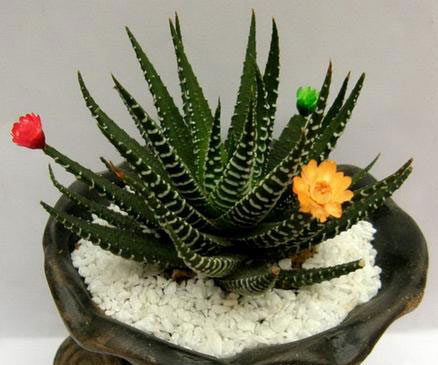Haworthia Fasciata Profile
Written by Iris
Oct 22 2021
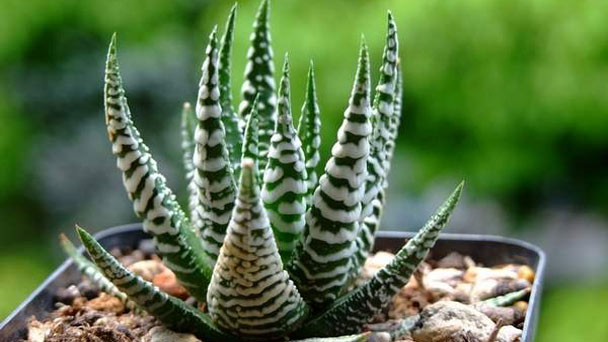
Haworthia Fasciata is a low-growing succulent that can reach 4-8 inches in height. This abundant sucking plant forms a proliferating rosette from the base. Haworthia Fasciata is usually a slow-growing succulent that can last a lifetime. Haworthia Fasciata comes in clumps, so it pairs well with other succulents in the same container.
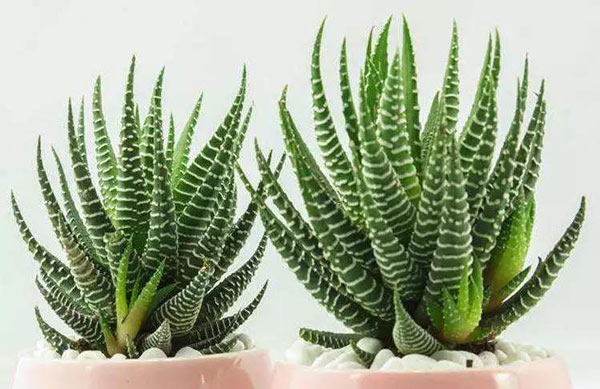
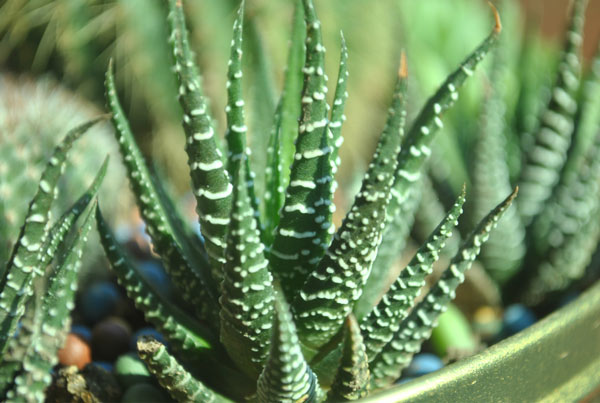
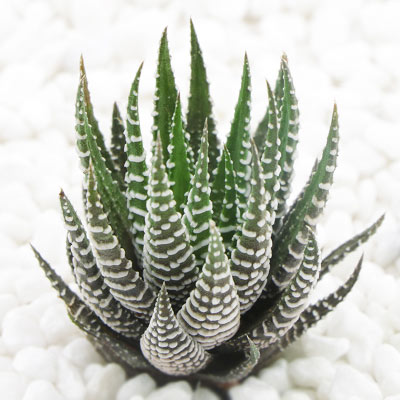
Haworthia margaritifera has warty white projections on the leaves.
Haworthia fasciata features horizontal white stripes and is sometimes called the zebra Haworthia.
Haworthia bolusii has "tufted" edges to the leaves.
Haworthia attenuata features long pointed green leaves.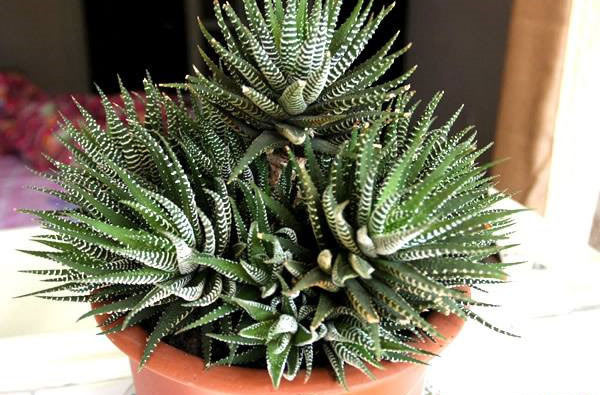
Haworthia Fasciata PictureHaworthia Fasciata InfoHaworthia Fasciata Native HabitsHaworthia Fasciata DistributionHow to Grow & Care for Haworthia FasciataHow to Grow Haworthia FasciataHow to Care for Haworthia FasciataUses of Haworthia FasciataVarieties of HaworthiaHaworthia Fasciata Common Pests/DiseasesHaworthia Fasciata Companion Plants
Haworthia Fasciata Picture
Haworthia Fasciata Info
| Botanical Name | Haworthia fasciata |
| Hardiness: | Tender to frost, grow indoors unless in a frost free climate. Prefer dry conditions. |
| Active Growing Seasons: | Grows more in the Spring and Fall during milder temperatures. |
| Dormancy: | Can enter dormancy in response to high temperatures consistently more then 80°F and require less water. |
| Preferred Temperature Range: | 55°F-80°F (13°C-27°C) |
| Feeding: | Feeding during the active growing months in the Spring and the Fall is optimal for care. |
| Size at Maturity: | grow slowly to a compact size of around 6 inches (15 cm) in height and width. |
Haworthia Fasciata Native Habits
This South African succulent stands out for its erect, multifarious leaves having streaks of white tubercles on the green outer surface which gives it the Zebra effect. When stressed (mainly due to long hours in the hot sun), the tip of the leaves may turn red. Haworthia fasciata has a miniature leafy stem that appears to be almost invisible. Due to its slow-growing nature, the Zebra Haworthia rarely blooms especially when planted indoors. When it does, blooms appear in summer characterized by tiny, tubular pink or white flowers on an inflorescence (a thin tall stem).Haworthia Fasciata Distribution
Haworthia Fasciata or the Zebra plant, is native to the Eastern Cape of South Africa. haworthia fasciata always get the good ones.It was introduced to Europe in 1600 by a group of adventurous collectors and is now a popular household beauty around the world.
How to Grow & Care for Haworthia Fasciata
How to Grow Haworthia Fasciata
Propagating Haworthia Fasciata is pretty simple and can be done using offsets or stem cuttings. However, most prefer doing it through offset as it is easier compared to using stem cuttings.- With Cuttings
- With Offsets

How to Care for Haworthia Fasciata
- Light
- Soil
- Water
- Temperature and Humidity
- Fertilizer
- Pruning

Uses of Haworthia Fasciata
Haworthia fasciata plants make excellent additions to desert dish-gardens. Display these window sill succulents in small pots. It is another way to appreciate the beautiful foliage of this extraordinary plant.Varieties of Haworthia
There are more than 100 species of Haworthia, but their classification can be complex. The main difference among the common species is the size of the leaves and the orientation of the white markings on the leaves. In general, the best advice is to buy the most attractive variety to you based on leaf form and markings, as they all have similar cultural requirements. Some popular species include:Haworthia margaritifera has warty white projections on the leaves.
Haworthia fasciata features horizontal white stripes and is sometimes called the zebra Haworthia.
Haworthia bolusii has "tufted" edges to the leaves.
Haworthia attenuata features long pointed green leaves.

Haworthia Fasciata Common Pests/Diseases
Fortunately, Haworthia fasciata does not suffer from many pest invasions. Spider mites and mealybugs are the most common insects that occasionally plague it. Nothing too unordinary. These scale bugs stick to the leaves, robbing the Haworthia fasciata plant of the essential nutrients. If the Haworthia Fasciata is attacked, the easiest way to handle this problem is to spray the affected plant using a good-quality pesticide.Haworthia Fasciata Companion Plants
Haworthias species are small succulent plants closely related to Aloe, Gasteria, Kniphofia, Poellnitzia and Astroloba species.Latest Updated
- Benefits of Bugleweed - 7 Science-backed Health Benefits
- Bugleweed Dangers & Side Effects - Is It Poisonous?
- How to Plant Evergreen Trees - What You Should Know
- When to Plant Evergreens - Grow Guide for Evergreen Trees
- 12 Wonderful Evergreen Shrubs for Your Garden
- 12 Popular Evergreen Plants with Pictures for Beginners
- When And How To Prune A Lilac Bush Like a Pro
- How to Grow & Care for Lilac Vine (Hardenbergia Violacea)
- Japanese Lilac Tree (Syringa Reticulata) Care & Propagation Guide
- Shumard Oak Pros and Cons - What to Know
Popular Articles
- Winter maintenance of Antirrhinum Majus
- How to Grow Terminalia Mantaly Tree
- How to Grow and Care for Crossostephium Chinense
- How to grow Antirrhinum Majus in spring
- Peristeria Elata (Dove Orchid) Profile: Info & Care Guide
- Underwatered Snake Plant (Sansevieria Trifasciata) - Signs And How To Fix
- How to Care for Brazilian Jasmine Plant (Mandevilla Sanderi)
- How to Grow & Care for Graptopetalum Purple Delight in Summer
- Rosa Chinensis (China Rose): Plant Growing & Care Tips
- How to Care for Baby Sun Rose (Aptenia Cordifolia)
